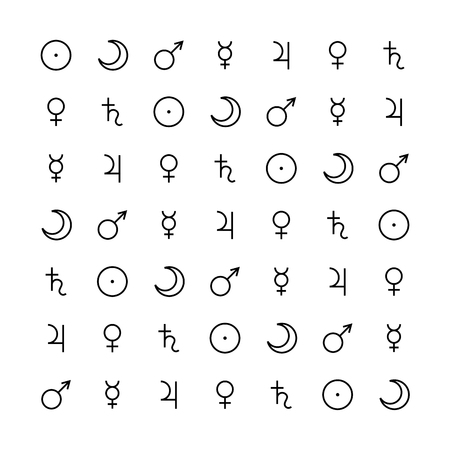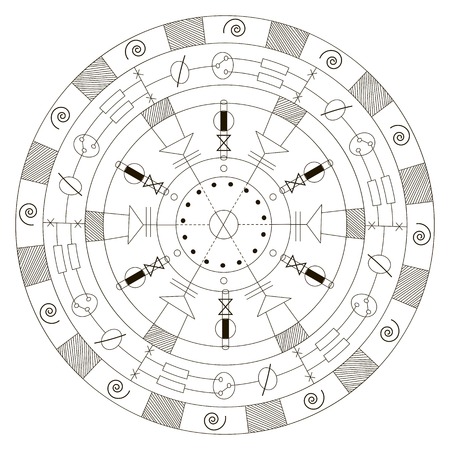1. Understanding Budh Mahadasha in Indian Vedic Astrology
In the profound ocean of Jyotish Shastra, Budh Mahadasha stands as a pivotal chapter that echoes through the lives of countless devotees across Bharat. Rooted deeply in Sanatan Dharma, this planetary period—governed by Budh or Mercury—is believed to hold the divine power to shape one’s destiny in remarkable ways. In Indian culture, astrology is not just a science but a sacred art passed down from our ancestors, reflecting the timeless faith that celestial energies guide human lives.
Budh Mahadasha, lasting for 17 years, is much more than just a phase on your kundli. It signifies the awakening of intelligence, communication, and adaptability—qualities that Mercury bestows as per Vedic traditions. Many Indians consult family astrologers or pandits when entering this dasha, seeking clarity on how it will influence their life path. As elders often say, “Budh ke samay buddhi ka vikas hota hai”—during Mercury’s reign, wisdom flourishes.
The significance of this dasha lies in its transformative effect, often acting as a karmic turning point. Whether it brings financial success, intellectual breakthroughs, or lessons in relationships, each devotee’s journey is unique yet connected by the thread of cosmic order. The stories woven around Budh Mahadasha reflect not only personal transformation but also the collective belief that every moment is orchestrated by the planets above.
For centuries, Indian families have turned to Jyotish Shastra for guidance during major life events—be it marriage, career choices, or health concerns—believing that the unfolding of Budh Mahadasha can unlock hidden potentials or reveal challenges to be overcome. It is through this lens that devotees experience both hope and humility, trusting in the rhythm set by ancient wisdom.
As we delve deeper into real-life experiences and decode the symbolism behind numbers and planets, let us remember: in India’s cultural tapestry, astrology is not just prediction—it is prerna (inspiration), guiding souls towards self-realisation and spiritual growth.
2. Sacred Numbers and Mercurys Mystical Influence
In the heart of Indian astrology, every planet holds a unique vibrational frequency, but Budh (Mercury) is especially revered for its connection to sacred numerology and spiritual awakening. The Budh Mahadasha, governed by Mercury, is often considered a period where intellect, communication, and clarity are heightened. Yet, beneath these qualities lies an intricate web of numbers that devotees believe can unlock the soul’s true potential.
The Numerological Essence of Mercury
Mercury’s energy in Vedic numerology is encapsulated by the number 5—a symbol of adaptability, curiosity, and transformative power. In Indian devotional practices, chanting mantras or performing rituals in multiples of 5 or 9 is believed to amplify Mercury’s blessings. These numbers are not chosen at random; they echo the cosmic rhythm inherent in Indian culture, where every action aligns with planetary vibrations.
Sacred Numbers and Their Spiritual Resonance
| Number | Mercurial Meaning | Devotional Practice |
|---|---|---|
| 5 | Communication, adaptability, wit | Five-fold chants (Panchakshari), five-element pujas |
| 9 | Karmic cycles, spiritual culmination | Nine-step Navagraha worship during Budh Mahadasha |
| 17 | Victory over obstacles (1+7=8, Saturn’s discipline balanced by Mercury) | Seventeen recitations for overcoming mental blocks |
| 23 | Courage and new beginnings (2+3=5, Mercury amplified) | Special prayers on the 23rd day of Mahadasha onset |
Mystical Vibrations in Daily Devotion
Indian devotees often share how aligning daily routines—such as waking up at 5 AM for meditation or completing 9 rounds of mala japa—creates harmony with Mercury’s vibration. This sacred timing is seen as a way to ‘decode’ the universe’s message, making life-changing shifts possible during Budh Mahadasha. The resonance between these numbers and Mercury’s influence becomes a living mantra, guiding seekers towards clarity and enlightenment.

3. Real-Life Transformations: Devotee Stories from the Heartland
Across the vast and vibrant land of Bharat, Budh Mahadasha has been a turning point in the lives of countless devotees. From small villages in Uttar Pradesh to cosmopolitan hubs like Bengaluru, the stories echo a common thread—transformation through divine guidance and astrological wisdom. Let us journey into these heartfelt accounts.
From Struggle to Success: Ramesh’s Journey
Ramesh, a school teacher from a humble background in Bihar, faced years of professional stagnation. When Budh Mahadasha commenced in his Kundli, he sought counsel from his family astrologer (Panditji). With remedies like reciting Vishnu Sahasranama and wearing green clothes on Wednesdays, Ramesh noticed gradual improvement. Within months, he received recognition at school and his communication skills blossomed. As Ramesh shares, “Budh Dev gave me clarity and confidence to express myself. My career took a new direction.”
Healing Through Understanding: Priya’s Awakening
Priya, a homemaker from Chennai, struggled with misunderstandings in her joint family. The onset of Budh Mahadasha brought heightened sensitivity and anxiety. Guided by her Guruji’s advice to meditate with emerald mala and chant Budh Beej Mantra, she experienced inner peace. Over time, her relationships improved as she learned the value of effective listening—an attribute blessed by Mercury (Budh). Priya reflects, “Budh Mahadasha taught me that healing starts within. I now cherish my family bonds.”
Entrepreneurial Dreams Fulfilled: Aarav’s Story
Aarav, an aspiring entrepreneur from Mumbai’s suburbs, faced repeated failures in business ventures. During Budh Mahadasha, an elder suggested lighting ghee lamps for Budh Dev on Wednesdays and seeking blessings at a local temple. Soon after, Aarav’s networking skills sharpened and he landed a major partnership deal. Today, he credits his success to faith and focused efforts during this auspicious period.
These real-life transformations reveal that Budh Mahadasha is not just an astrological phase—it is a journey of self-discovery and empowerment. Whether overcoming obstacles or unlocking hidden talents, devotees across India experience profound changes when they align their intentions with the cosmic energies of Mercury.
4. Rituals, Remedies, and Local Wisdom
Throughout India, devotees experiencing Budh Mahadasha embrace a tapestry of rituals, temple traditions, and indigenous remedies to balance Mercury’s influence and invite auspicious outcomes. These practices vary according to region, local beliefs, and family customs, reflecting the country’s vast cultural diversity.
Authentic Rituals for Budh Mahadasha
Devotees often begin their spiritual journey with traditional Vedic remedies prescribed by astrologers. The recitation of the “Budh Beej Mantra” (Om Bram Brim Brom Sah Budhaya Namah) is commonly performed on Wednesdays—Mercury’s day. Offerings of green moong dal (lentils), green clothes, and fresh grass at temples dedicated to Lord Vishnu or Budh Graha are integral parts of these rituals. Lighting a ghee lamp while chanting mantras amplifies the healing vibrations associated with Budh.
Temple Traditions Across Regions
India’s sacred geography offers unique temple traditions for harmonizing Budh’s energy:
| Region | Temple/Deity | Tradition/Offering |
|---|---|---|
| Tamil Nadu | Thiruvenkadu Swetharanyeswarar Temple (Budhan Sthalam) | Milk abhishekam, green cloth donation |
| Maharashtra | Siddhivinayak Temple (Ganapati) | Durva grass offering, reciting Ganapati Atharvashirsha |
| Bihar | Nakshatra Van Temples | Planting saplings on Wednesdays, chanting planetary hymns |
| Karnataka | Kukke Subramanya Temple | Naga Prathishta rituals, turmeric offerings for intellect and speech |
Indigenous Remedies from Everyday Life
Alongside formal pujas, Indian households employ folk wisdom rooted in Ayurveda and local traditions:
- Ayurvedic Herbs: Consuming Brahmi and Tulsi is believed to sharpen intellect and soothe nervous tension during challenging phases of Budh Mahadasha.
- Colour Therapy: Wearing green attire or gemstones like Emerald (Panna) on the little finger is popular for aligning personal energies with Mercury.
- Panchang Reading: Families consult the daily Panchang to select auspicious timings for important communications or new ventures during this period.
- Community Service: Donating stationery, books, or helping students is seen as an act that pleases Mercury and strengthens positive karma.
The Healing Power of Collective Faith
These diverse rituals and remedies not only harmonize Budh’s cosmic vibrations but also foster a sense of community among devotees. Whether chanting mantras at dawn or planting trees under the guidance of elders, these acts embody India’s living wisdom—where astrology meets daily life in transformative ways.
5. Astrological Guidance from Indian Gurus
Wisdom from the Land of Rishis and Seers
In the sacred tradition of Indian astrology, Budh Mahadasha is considered a transformative period where Mercury’s energies can bring intelligence, communication skills, and material growth. Across India, devotees have sought guidance from renowned gurus and astrologers to maximize these positive vibrations. These spiritual teachers often emphasise the importance of aligning one’s actions with Mercury’s qualities—clarity, adaptability, and analytical thinking.
Practical Insights from Legendary Astrologers
Astrologers like Bejan Daruwalla and Dr. Prem Kumar Sharma advise devotees to embrace learning opportunities during Budh Mahadasha. They recommend engaging in education, improving communication skills, and cultivating humility in speech. Many suggest wearing green-coloured clothes or emerald gemstones as remedies to enhance Mercury’s influence, based on one’s horoscope.
Spiritual Practices Recommended by Gurus
Spiritual masters such as Sri Sri Ravi Shankar and Sadhguru highlight meditation and mantra chanting—especially the “Om Budhaya Namaha” mantra—as vital for inner harmony during this Dasha. Performing pujas on Wednesdays, donating green lentils, and reading sacred texts like Vishnu Sahasranama are also advised for seeking Mercury’s blessings. These practices not only strengthen Mercury’s positive impact but also help devotees find mental peace amidst life transitions.
Cultural Context: The Indian Way of Harnessing Budh Mahadasha
Within Indian families, elders often share stories of how prayers at temples dedicated to Lord Vishnu or Lord Ganesha helped them thrive during Budh Mahadasha periods. Many recount consulting village pundits or city-based jyotishacharyas who provided personalized rituals rooted in Vedic wisdom. The synthesis of ancient knowledge and modern interpretation by contemporary gurus enables today’s youth to navigate this phase with confidence and faith.
Conclusion: Embracing Guru Kripa for Transformation
The collective message from India’s revered spiritual leaders is clear: with devotion, self-discipline, and openness to learning, every devotee can transform challenges into stepping stones under Budh Mahadasha. Trusting in Guru Kripa (the grace of the guru) ensures that Mercury’s light illuminates the path ahead, turning this astrological period into a journey of self-realization and success.
6. Common Challenges and Divine Blessings
Understanding the Hurdles of Budh Mahadasha
For many devotees, entering the Budh Mahadasha is like stepping into a new chapter guided by Mercury’s unique energies. While Budh is known for intellect, communication, and analytical skills, this period can also bring its own set of challenges that test one’s resolve and faith. Typical hurdles often include misunderstandings in personal relationships, sudden changes in career paths, or financial fluctuations. Many people experience confusion in decision-making or a sense of restlessness that makes it difficult to focus on their goals.
Facing Struggles with Faith and Perseverance
In Indian culture, every astrological phase is seen as both a lesson and an opportunity. During Budh Mahadasha, devotees often lean on their faith—chanting mantras like “Om Bum Budhaya Namaha,” wearing emerald stones, or observing fasts on Wednesdays—to balance Mercury’s energy. These spiritual practices are not just rituals; they become anchors of hope and resilience. Families gather for collective prayers, elders share stories from the Puranas about overcoming obstacles with patience, and communities support each other through acts of seva (selfless service). This collective spirit embodies the Indian value of persevering together through life’s storms.
Divine Grace: Miracles Amidst Trials
Despite the turbulence, countless life-changing stories emerge during Budh Mahadasha where devotees witness unexpected blessings. One Mumbai-based devotee shared how she faced repeated job losses but, after months of reciting Budh Beej Mantra with devotion, she received an overseas job offer that transformed her life. Another family in Chennai struggled with misunderstandings between siblings; after participating in Wednesday pujas dedicated to Lord Vishnu and Mercury, harmony was miraculously restored in their home. Such stories are powerful reminders that divine grace often appears just when hope seems dimmest.
Lessons That Endure
The journey through Budh Mahadasha teaches humility, adaptability, and the importance of clear communication—values deeply woven into the Indian ethos. Devotees learn to embrace both struggle and success with equanimity, trusting that each challenge is a step towards greater wisdom. As countless Indians have discovered, when faced with Mercury’s tests, surrendering to divine will and maintaining steadfast faith invite blessings that go beyond material gains—they transform hearts and lives forever.


